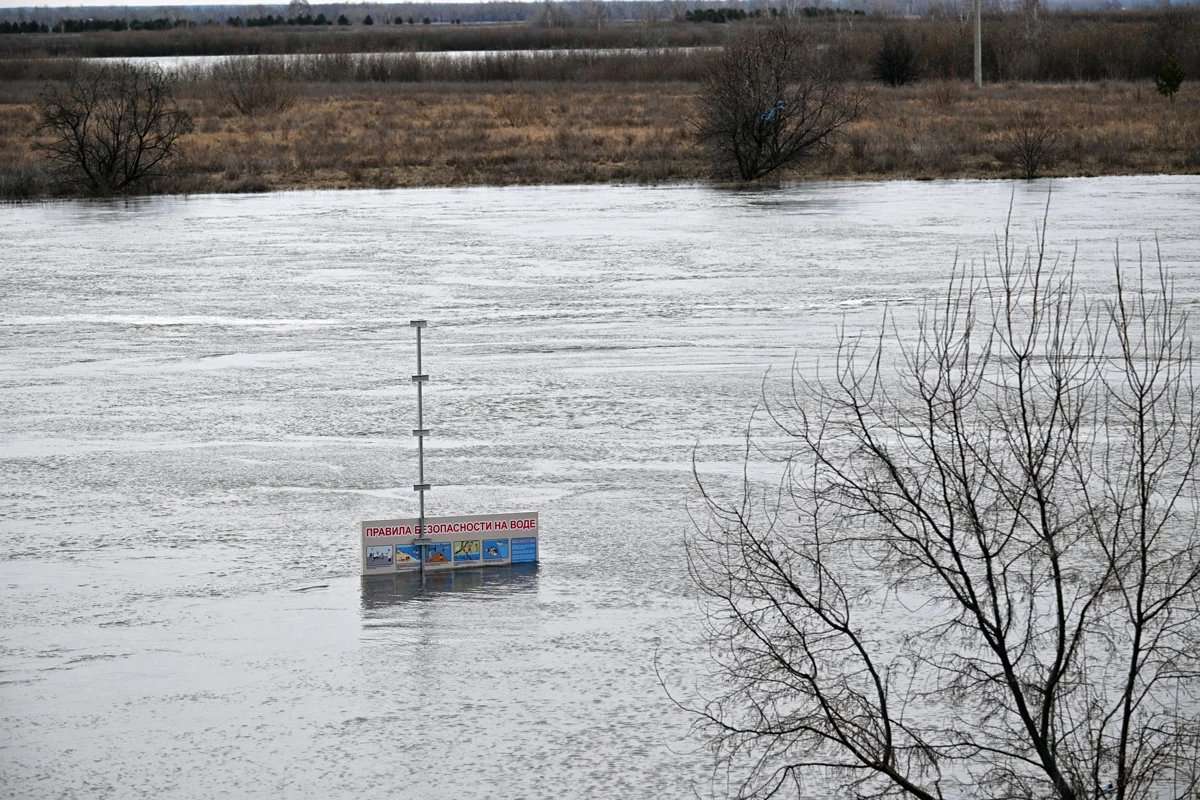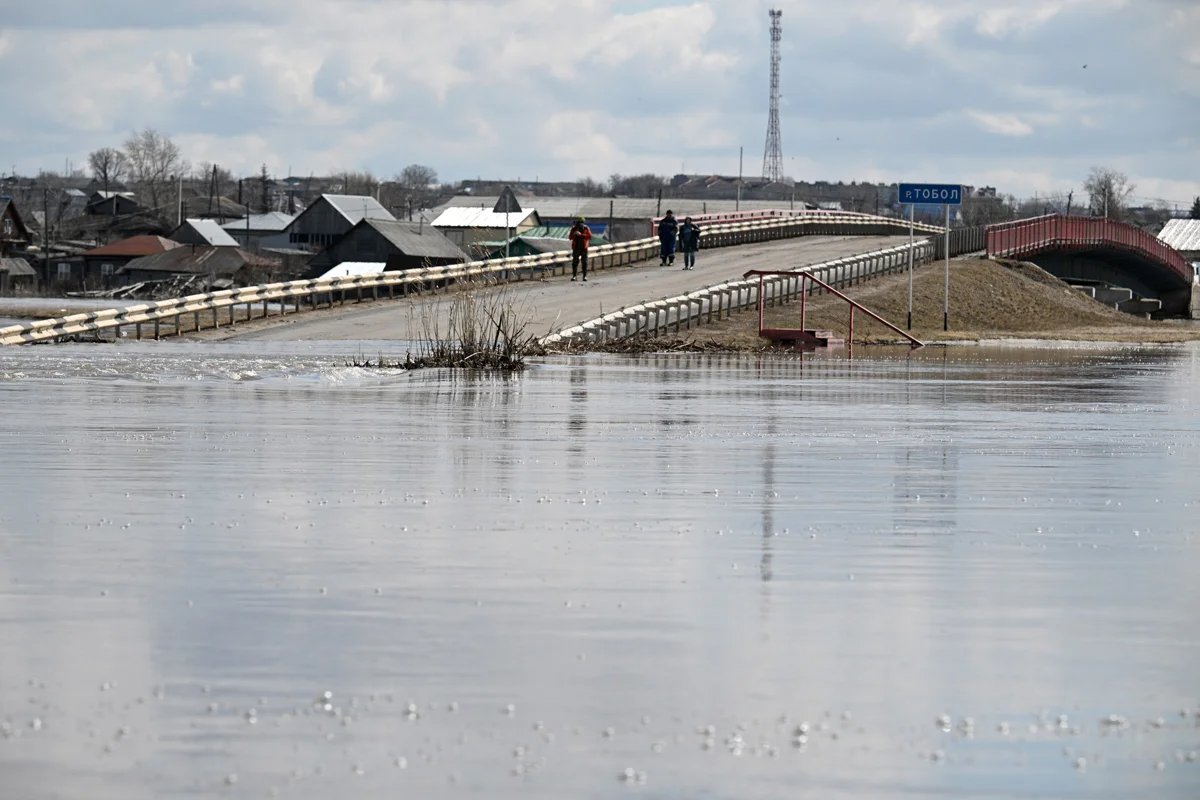The flooding of old uranium wells in the Kurgan region of the Urals could put thousands of local residents in danger as one of the region’s largest rivers may now be at risk of radioactive contamination.
This April saw massive flooding in the Russian Urals, with the city of Orsk in the Orenburg region and parts of the Kurgan region hit the hardest.
Old wells at the Dobrovolnoye deposit in the Kurgan region, where Russia’s nuclear giant Rosatom mines uranium, were recently flooded, risking radioactive contamination of the Tobol River, which flows through Western Siberia and Kazakhstan.
The authorities in the Kurgan region acknowledged on 11 April that the land where the uranium deposit is located was “at risk of flooding”, and three days later, the regional Ministry of Emergency Situations reported that a village near the deposit had been completely cut off from the rest of the region.
Rosatom denied the flooding of its new wells in a statement on 23 April, saying they were located in an elevated area. But there are old wells in the lowlands, which environmentalists warn continue to leak uranium solution despite being sealed off.
Nuclear bone of contention
The first attempts to mine uranium at the Dobrovolnoye deposit were made back in the 1980s using in-situ leaching — the cheapest method of uranium extraction, physicist and engineer Andrey Ozharovsky explained.
The method involves drilling boreholes through the uranium deposits, pumping solution into them, and then extracting and processing the dissolved uranium. This led to massive underground reservoirs of radioactive uranium solution forming, which presented a safety issue.
As a result, extraction at Dobrovolnoye was halted for years, until June 2017, when then Prime Minister Dmitry Medvedev granted Dalur, a Rosatom daughter company, the right to exploit the deposit. Rosatom resumed solution mining as the regional authorities hoped that the revenue from exported uranium would plug a hole in the budget deficit.
Eco-activists in the Kurgan region have repeatedly demanded a ban on mining at Dobrovolnoye and drew attention to the danger of in-situ leaching that risked poisoning groundwater and the Tobol River with uranium salts. The activists went to court several times, but all of their motions were rejected.
“It will be worse than Chernobyl,” Alexey Taranov, a professor at Kurgan State University, warned back in 2019. “Radioactive compounds may end up in our water, in our wells.”
The uranium dioxide being mined is not dangerous in itself, Taranov explained, but the mining process emits radium, a radioactive element with a half-life of three days, as well as radon, a deadly radioactive gas, and toxic uranium salts.
Local residents even tried to hold a referendum on the issue, but the regional parliament rejected their proposal as government officials assured them that in-situ leaching was safe for the environment.
Rosatom, meanwhile, accused protesters of “radiophobia”, dismissing their arguments as “myths” and even pressing charges for “calling for terrorist and extremist acts” against one local resident who fought against uranium mining. The activist, Lyubov Kudryashova, was ultimately fined 300,000 rubles (€3,450 at the time) in 2021.

Aftermath of the flooding in Kurgan, 17 April 2024. Photo: Yevgeny Razumny / Kommersant / Sipa USA / Vida Press
Health risks
Ozharovsky determined that the wells at the uranium deposit had been flooded by comparing geological maps and satellite images. Local residents have also reported the flooding of Dobrovolnoye.
Uranium contamination in the Tobol River would drastically reduce the quality of potable water, Ozharovsky warned.
“A considerable amount of uranium solution has leaked into the Tobol River. Of course, it’s a big river and the uranium will be diluted, so I wouldn’t expect any large concentrations. But people who eat fish from the Tobol River or drink the water in Kurgan will ingest uranium, which will continue decaying and irradiating them from the inside,” Ozharovsky explained.
Ecologist and nuclear power expert Vladimir Slivyak confirmed to Novaya Europe that a significant amount of radioactive substances had likely entered the ecosystem. The extent of the damage cannot yet be estimated, he added, since the authorities refuse to comment or provide precise data as to the scale of contamination.
Slivyak echoed Ozharovsky’s concerns about ingesting uranium through potable water, saying it may lead to internal irradiation, which increases the risk of serious diseases, particularly cancer.
“Even small levels of such radiation can cause significant damage to one’s organs,” he added.
A local environmental organisation also warned that the Tobol River may have been contaminated with radionuclides that had accumulated over the years in underground water leaking from old uranium wells.
For many years, the old uranium deposits have been enclosed by clay and solid rock, Alexey Shvarts, former head of the local Navalny campaign office, told independent news outlet Agentstvo. “To extract uranium, hundreds, maybe thousands of wells were drilled into the ore body, damaging the natural sarcophagus. Now it’s all gone into the water,” he added.
The Russian government needs to prepare and adapt to climate change, which will only cause more flooding in upcoming years, Slivyak said, but this remains far from the government’s mind.

The Tobol River flooding the village of Zverinogolovskoye, near the Dobrovolnoye deposit, 11 April 2024. Photo: Yevgeny Razumny / Kommersant / Sipa USA / Vida Press
“The government doesn’t care about climate change,” Slivyak said, adding that most of the blame for the current scale of the flooding and all its consequences lies with the Russian authorities.
A number of Russian government bodies, such as the Ministry for Economic Development and the Federal Service for Hydrometeorology and Environmental Monitoring, have proposed climate change adaptation plans, but they have not brought tangible results.
“Given that Vladimir Putin is not interested in anything but war and ignores the issue of climate change, the consequences will be devastating,” Slivyak concluded.

